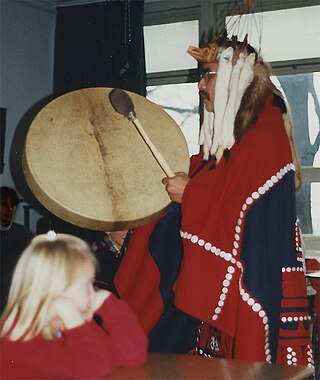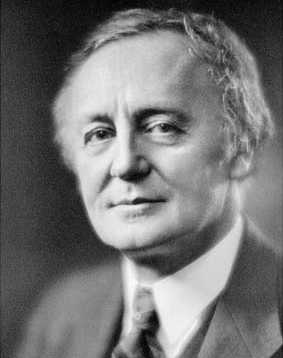Related Research Articles

The Tsimshian are an Indigenous people of the Pacific Northwest Coast. Their communities are mostly in coastal British Columbia in Terrace and Prince Rupert, and Metlakatla, Alaska on Annette Island, the only reservation in Alaska.

Charles Marius Barbeau,, also known as C. Marius Barbeau, or more commonly simply Marius Barbeau, was a Canadian ethnographer and folklorist who is today considered a founder of Canadian anthropology. A Rhodes Scholar, he is best known for an early championing of Québecois folk culture, and for his exhaustive cataloguing of the social organization, narrative and musical traditions, and plastic arts of the Tsimshianic-speaking peoples in British Columbia, and other Northwest Coast peoples. He developed unconventional theories about the peopling of the Americas.
The Laxsgiik is the name for the Eagle "clan" (phratry) in the language of the Tsimshian nation of British Columbia, Canada, and southeast Alaska. It is considered analogous or identical to identically named groups among the neighboring Gitksan and Nisga'a nations and also to lineages in the Haida nation.
The Kitkatla or Gitxaala are one of the 14 bands of the Tsimshian nation of the Canadian province of British Columbia, and inhabit a village, also called Kitkatla, on Dolphin Island, a small island just by Porcher Island off the coast of northern B.C. Because of their location, the Kitkatla have sometimes been called Porcher Island Indians. They were also, in the early contact period, called the Sebassa tribe, for their paramount chief at the time, Ts'ibasaa. The name Kitkatla derives from the Tsimshian name Gitkxaała, from git- and kxaała, since they are the farthest from the mainland of the Tsimshian tribes. Another name for themselves is Git lax m'oon in recognition of the land they lived on: the islands and inlets of this rugged piece of coastline.

Lax-Kwʼalaams, previously called Port Simpson until 1986, is an Indigenous village community in British Columbia, Canada, not far from the city of Prince Rupert. It is located on Port Simpson Indian Reserve No. 1, which is shared with other residential communities of the Tsimshian Nation. The Nine Allied Tribes are: Gilutsʼaaw, Ginadoiks, Ginaxangiik, Gispaxloʼots, Gitando, Gitlaan, Gitsʼiis, Gitwilgyoots, and Gitzaxłaał.
The Giluts'aaẅ are one of the 14 tribes of the Tsimshian nation in British Columbia, Canada, and one of the nine of those tribes making up the "Nine Tribes" of the lower Skeena River resident at Lax Kw'alaams, B.C. The name Giluts'aaw means literally "people of the inside". Their traditional territory is the area around Lakelse Lake, near present-day Terrace, B.C., at the Skeena River.
The Ginadoiks are one of the 14 tribes of the Tsimshian nation in British Columbia, Canada, and one of the nine of those tribes making up the "Nine Tribes" of the lower Skeena River resident at Lax Kw'alaams, B.C. The name Ginadoiks means literally "people of the rapids". Their traditional territory is the watershed of the Gitnadoiks River, a tributary of the Skeena. Since 1834, they have been based at Lax Kw'alaams, when a Hudson's Bay Company fort was established there.
The Ginaxangiik are one of the 14 tribes of the Tsimshian nation in British Columbia, Canada, and one of the nine of those tribes making up the "Nine Tribes" of the lower Skeena River resident at Lax Kw'alaams, B.C. The name Ginaxangiik means literally "people of the hemlock." Their traditional territory includes the watershed of the Exchamsiks River, a tributary of the Skeena River. Since 1834, they have been based at Lax Kw'alaams, when a Hudson's Bay Company fort was established there.
The Gispaxlo'ots are one of the 14 tribes of the Tsimshian nation in British Columbia, Canada, and one of the nine of those tribes making up the "Nine Tribes" of the lower Skeena River resident at Lax Kw'alaams, B.C. The name Gispaxlo'ots means literally "people of the place of elderberries." Their traditional territory includes an area on the Skeena River between present-day Terrace and Prince Rupert. Since 1834, when a Hudson's Bay Company trading fort was established at Lax Kw'alaams, they have been based there. Their chief Ligeex permitted the HBC to build on Gispaxlo'ots territory.
The Gitando are the youngest of the 14 tribes of the Tsimshian people in British Columbia, Canada. It is one of the nine of those tribes making up the "Nine Tribes" First Nation of the lower Skeena River resident at Lax Kw'alaams, British Columbia. The name Gitando means the people of weirs. Their traditional territory includes the watershed of the Exstew River, a tributary of the Skeena River. Since 1834, the Gitando have been based at Lax Kw'alaams, following establishment of a Hudson's Bay Company trading fort there. They are closely related to the Gispaxlo'ots, another of the Nine Tribes, who have an adjacent territory.
The Gitlan are one of the 14 tribes of the Tsimshian Nation in British Columbia, Canada, and referred to as one of the 'nine tribes of the lower Skeena River. The name Gitlan means "people of the Stern Canoe." Their traditional territory includes the watershed of the Zimacord River, a tributary of the Skeena River. An area of the riverbank there resembled from the distance a canoe-stern, hence the name of the tribe. The Gitlan had village sites at Venn Pass and around the harbour in addition to their main region on the Skeena River.
The Gits'iis are one of the 14 tribes of the Tsimshian nation in British Columbia, Canada, and one of the nine of those tribes making up the "Nine Tribes" of the lower Skeena River resident at Lax Kw'alaams, B.C.
The Gitwilgyoots are one of the 14 tribes of the Tsimshian nation in British Columbia, Canada, and one of the nine of those tribes making up the "Nine Tribes" of the lower Skeena River resident at Lax Kw'alaams, B.C. The name Gitwilgyoots means literally "people of the place of kelp." Their traditional territory includes several areas around the estuary of the Skeena River. Since 1834, they have been based at Lax Kw'alaams, when a Hudson's Bay Company fort was established there.
The Gitzaxłaał are one of the 14 tribes of the Tsimshian nation in British Columbia, Canada, and one of the nine of those tribes making up the "Nine Tribes" of the lower Skeena River resident at Lax Kw'alaams, B.C. The name Gitzaxłaał means literally "people of ." Their traditional territory includes the watershed of the Ecstall River, a tributary of the Skeena River, including the now abandoned town, Port Essington, B.C. They also own areas on Dundas Island. Since 1834, they have been based at Lax Kw'alaams, when a Hudson's Bay Company fort was established there.

William Beynon (1888–1958) was a Canadian hereditary chief of the Tsimshian Nation and an oral historian; he served as ethnographer, translator, and linguistic consultant to many anthropologists who studied his people.

Arthur Wellington Clah (1831–1916) was a Canadian First Nations employee of the Hudson's Bay Company at Lax Kw'alaams, B.C., who was also a hereditary chief in the Tsimshian nation, an anthropological informant, a Methodist missionary, and an extensive diarist.
Viola E. Garfield was an American anthropologist best known for her work on the social organization and plastic arts of the Tsimshian nation in British Columbia and Alaska.
Ligeex is an hereditary name-title belonging to the Gispaxlo'ots tribe of the Tsimshian First Nation from the village of Lax Kw'alaams, British Columbia, Canada. The name, and the chieftainship it represents, is passed along matrilineally within the royal house called the House of Ligeex. The House of Ligeex belongs to the Laxsgiik.

William Duncan was an English-born Anglican missionary who founded the Tsimshian communities of Metlakatla, British Columbia, in Canada, and Metlakatla, Alaska, in the United States. Although sometimes referred to as "Father Duncan" in subsequent reports, he was never ordained.
Frederick Alexcee was a Canadian carver and painter from the community of Lax Kw'alaams with Tsimshian ethnicity.
References
- "Henry W. Tate". Dictionary of Canadian Biography (online ed.). University of Toronto Press. 1979–2016.